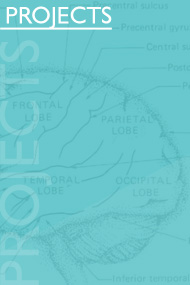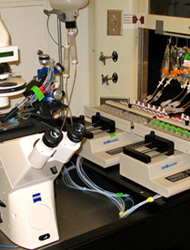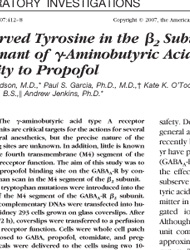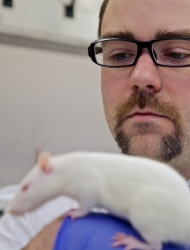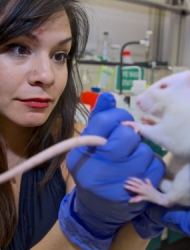Neuroscience Laboratory of Paul GarcÃÂa, MD, PhD
 Research in the Neuroanesthesia Laboratory focuses on the neurophysiological mechanisms that underlie inhibitory brain circuits. Enhancement of inhibitory pathways of the brain naturally lead to the familiar quiescent states of sleep and anesthesia. However, modulation of inhibitory networks in the brain also has profound implications on attention, memory, pain, and anxiety. Quiescent activity that resembles sleep or the anesthetized state is not unique to complex organisms like mammals and birds but has been observed in fruit flies, nematodes, and yeast; emphasizing how important these inhibitory circuits are to brain function. An organism’s response to injury also influences the inhibitory signaling pathways in the brain.
Research in the Neuroanesthesia Laboratory focuses on the neurophysiological mechanisms that underlie inhibitory brain circuits. Enhancement of inhibitory pathways of the brain naturally lead to the familiar quiescent states of sleep and anesthesia. However, modulation of inhibitory networks in the brain also has profound implications on attention, memory, pain, and anxiety. Quiescent activity that resembles sleep or the anesthetized state is not unique to complex organisms like mammals and birds but has been observed in fruit flies, nematodes, and yeast; emphasizing how important these inhibitory circuits are to brain function. An organism’s response to injury also influences the inhibitory signaling pathways in the brain.
As both a practicing anesthesiologist and a scientist, Dr. Garcia became interested in preserving neuronal function in the perioperative period, the common links between natural sleep and anesthesia, and the restoration of functional circuitry after manipulation of inhibitory networks through drugs that sedate or make one unconscious. Most of his work focuses on the pharmacologic manipulation of mammalian brain circuits which use the most abundant inhibitory neurotransmitter in the central nervous system gamma-aminobutyric acid (GABA) as their chief signaling molecule.
The Neuroanesthesia Laboratory has been active since 2010. In Fall of 2018, Dr. Garcia’s research group moved to Columbia University Medical Center in New York.
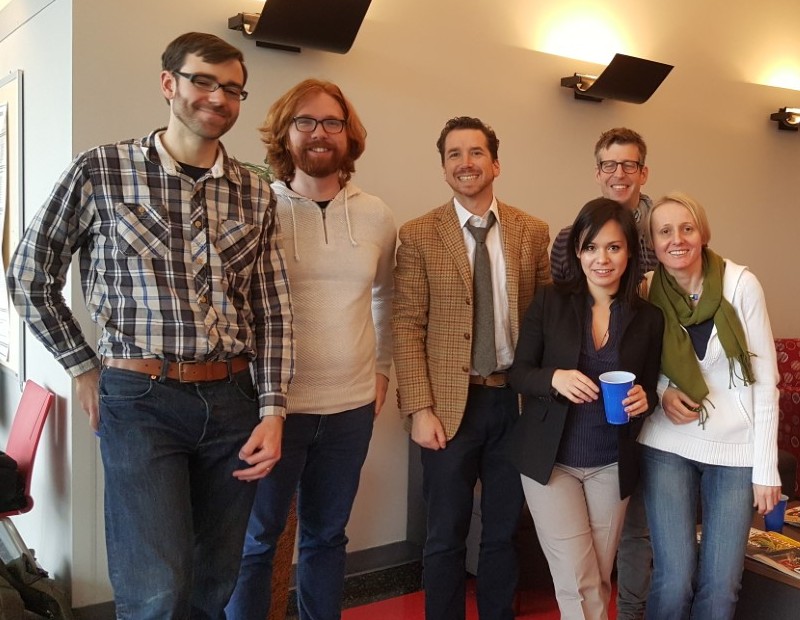
The Neuroanesthesia Lab in January 2017
From left to right: Jon Fidler, Christopher Sinon, Paul GarcÃÂa, Iris Speigel, Matthias Kreuzer, and Edyta Murlin.


